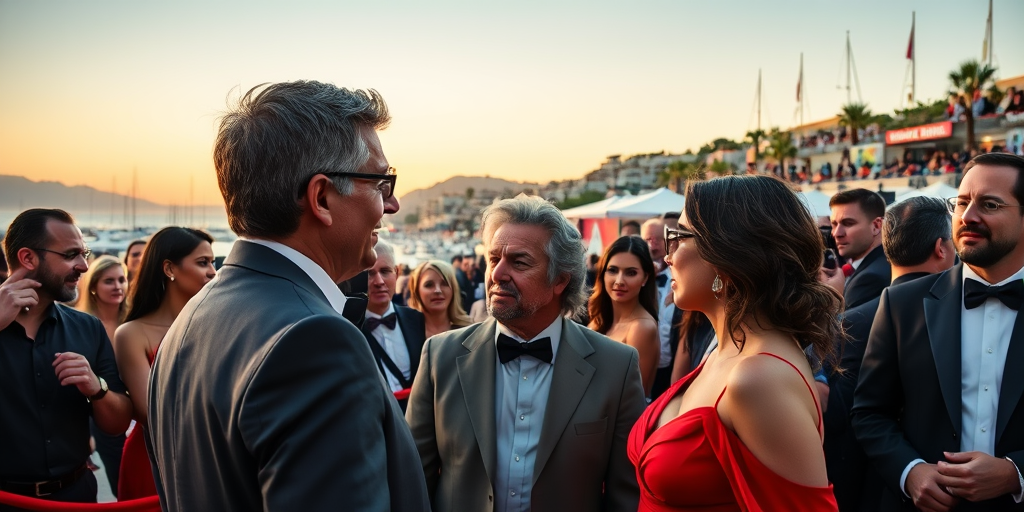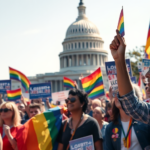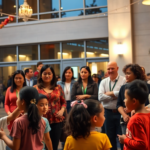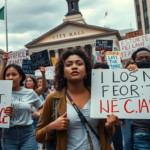LGBTQ+ Cinema: Stories of Courage and Resistance
In recent years, LGBTQ+ cinema has emerged as a powerful platform for stories of courage and resistance, capturing the interest of film enthusiasts around the globe. Spearheading this movement are filmmakers and artists who have defied cultural and political barriers to shine a light on diverse narratives within the LGBTQ+ community. From Russia’s Igor Myakotin to South Africa’s Niza Jay, the impact of their work resonates deeply within communities worldwide, including here in the United States.
A Global Stage for Queer Cinema
At the heart of queer cinema’s burgeoning prominence is a series of thought-provoking films and performances challenging oppressive regimes and outdated stereotypes. Igor Myakotin, a film producer from Russia, has garnered critical acclaim for his works “Queendom” and “Welcome to Chechnya.” These films provide a stark portrayal of queer life under Russia’s repressive regime, courageously bringing to light the struggles of the LGBTQ+ community in a region where persecution is rampant. Both films have been recognized with multiple awards, a testament to their storytelling prowess and bravery.
Another notable figure reshaping perceptions within the cinematic landscape is South African actor Niza Jay. Known for breaking stereotypes and empowering Black queers, Jay’s performances in “The Wound” and “Nkoli: The Vogue Opera” by Phillip Miller have been praised for their authenticity and impact. By providing visibility to marginalized voices, Jay challenges the audience to reconsider preconceived notions about Black queer identities.
Khozy Rizal, an Indonesian director, is making waves with his film “Basri & Salma in a Never-Ending Comedy,” which debuted at the prestigious Cannes Film Festival. Rizal’s work represents a paradigm shift in Indonesian cinema, inspiring local filmmakers to explore themes of queer diversity and innovation. His achievements at Cannes mark a significant moment for Southeast Asian cinema, encouraging more artists to embrace and project unique, underrepresented stories.
The Role of Film Festivals
Film festivals continue to play a pivotal role in amplifying otherwise unheard voices. The Cannes Film Festival, renowned for its glamorous appeal and artistic prestige, serves as an important venue for emerging films that push boundaries. The 2025 edition witnessed the recognition of diverse cinematic presentations, including Jafar Panahi’s Palme d’Or win for “It Was Just an Accident,” tackling social issues in Iran. These global platforms promote cultural dialogue and provide visibility to films that transcend traditional narratives.
In a similar vein, the Venice Film Festival remains a cultural highlight, showcasing a wide array of international films vying for the esteemed Golden Lion award. Through such festivals, filmmakers are empowered to share pioneering visions, broadening the scope of what cinema can achieve in terms of social impact.
Local Impact: Cultivating Community Engagement
For communities in the United States, the rise of LGBTQ+ cinema offers both educational and inspirational opportunities. Local film groups and LGBTQ+ advocacy organizations have been instrumental in organizing screenings and discussions around these films. Ashley Long, founder of Queer Film Society in Los Angeles, emphasizes the importance of these narratives in fostering understanding and empathy. “Films like these not only entertain but also educate. They provide a platform for dialogue and can change perceptions by highlighting the real-life experiences of our community,” she stated.
By engaging with these films, local residents can better appreciate the complexities and resilience within the LGBTQ+ community. Such storytelling fosters inclusivity and encourages broader societal acceptance, contributing to ongoing conversations around equality and human rights.
Challenges and Opportunities
Despite notable progress, challenges remain in the realm of LGBTQ+ cinema. Filmmakers often face financial and logistical barriers when attempting to produce and distribute their work, especially in regions with restrictive cultural norms. However, the increasing support from film festivals, streaming platforms, and international collaborations offer hopeful prospects.
In the U.S., local art councils and film institutes are increasingly acknowledging the importance of funding and promoting diverse narratives. By nurturing talent and providing resources, these organizations are vital in ensuring that queer voices continue to find expression through film and art.
The Way Forward
Looking ahead, the trajectory of LGBTQ+ cinema appears promising, with its potential to inspire new generations of filmmakers and audiences alike. As cinema continues to evolve, the stories of courage and resistance within the queer community remain crucial in challenging societal norms and broadening cultural horizons.
For those interested in exploring these films, local resources such as community film clubs and LGBTQ+ advocacy groups offer viewing guides, film discussions, and additional support. These organizations play a critical role in sustaining the conversation and using cinema as a tool for social change.
In conclusion, the rise of LGBTQ+ cinema underscores a significant cultural shift, championing diversity and promoting solidarity. By sharing these powerful narratives, the filmmaking community fosters a deeper understanding of the challenges and triumphs faced by LGBTQ+ individuals, both locally and globally. The stories of courage and resilience captured on screen continue to illuminate the path towards a more inclusive future.







